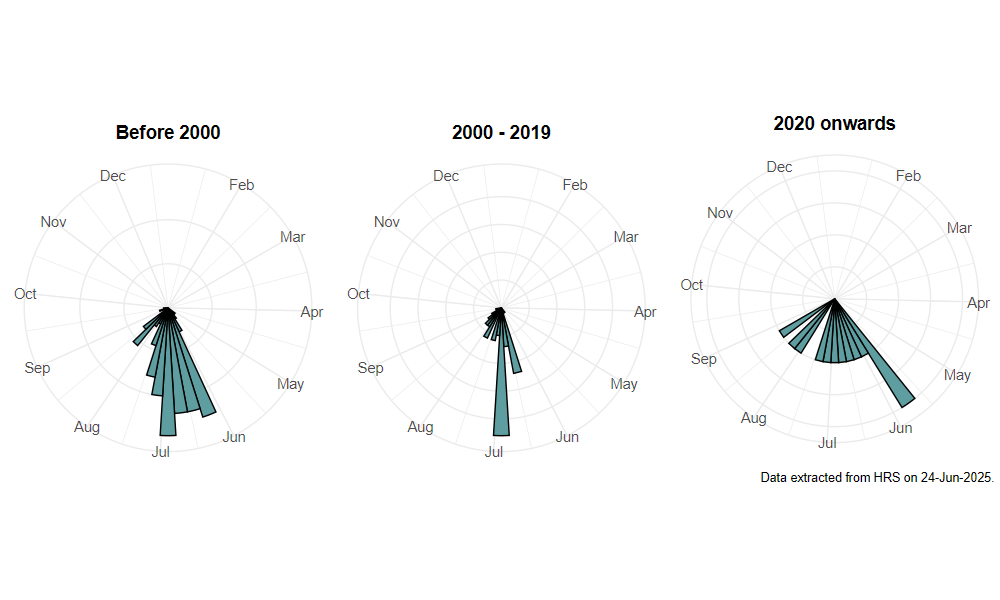Xylota xanthocnema Collin, 1939
Identification
Identification difficulty = 4. ![]()
![]() according to Ball & Morris, 20241
according to Ball & Morris, 20241
Biology
The larva has been found in rot-holes of Yew Taxus baccatus. It usually occurs in or near ancient deciduous woodland, although, according to Speight (2017)2 it favours sites with well-drained soils. Adults are found running rapidly over foliage or basking on sun-lit trunks in clearings. There appear to be no records of this species visiting flowers.
Flight period
The following plots show the number of unique records per week excluding those reported to be of immature stages.

Status
Lower Risk (Nationally scarce) - Ball & Morris, 20143. Notable - Falk, 19914.
Distribution
Rare and largely confined to the southern half of Britain, but also found in old woodland on limestone in Yorkshire (Stubbs, 1996)5. It was found to be locally abundant in some woods near Coventry by staff of the Herbert Art Gallery & Museum in the early 1980s.

Trends
The following plots show the Frescalo TFactor vs year and a map of the rescaled frequency (all records) for the species.
-
Ball, S., & Morris, R. (2024). Hoverflies of Britain and Ireland. WILDGuides (3rd ed.). Oxford: Princeton University Press. ↩
-
Speight, M. (2017). Species accounts of European Syrphidae ( No. 97). yrph the Net, the database of European Syrphidae (Diptera) (p. 294). Dublin: Syrph the Net publications. Retrieved from https://pollinators.ie/wordpress/wp-content/uploads/2018/05/StN-2017-Species-Accounts.pdf ↩
-
Ball, S., & Morris, R. (2014). A review of the scarce and threatened flies of Great Britain. Part 6: Syrphidae. ( No. 9). Species status (pp. 1–130). Peterborough: JNCC. ↩
-
Falk, S. (1991). A review of the scarce and threatened flies of Great Britain. ( No. 39). Research and Survey in Nature Conservation (pp. 1–194). Peterborough: NCC. ↩
-
Stubbs, A. (1996). British Hoverflies. Second (revised and enlarged) supplement. Reading: BENHS. ↩